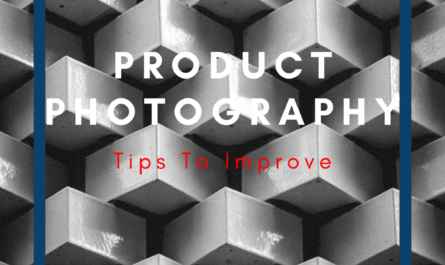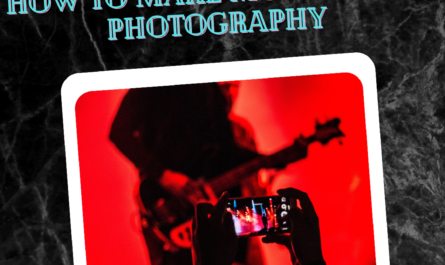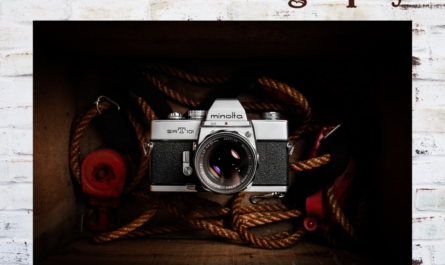Introduction:
If you are a beginner in the photography world, or you’ve been looking to up you’re photo game, chances are you’re probably thinking of buying into some of the basic necessities that all photographers need. I’ll put a note here though, you don’t really need anything to get into the hobby or take cool photos, even a phone will work. But if you think you are growing out of you’re mobile photography phase and decide you need some ‘serious’ gear, we’ve got the perfect recommendations for you. Here are the most important things you need as a beginner photographer:
- The Camera itself – Camera choices can get pretty controversial in the pro world. So, the number one thing I’d recommend to any beginner photographer is to get an interchangeable lens camera. It doesn’t matter if it’s a DSLR or Mirrorless, it doesn’t matter if it’s a Canon or a Nikon, the first thing you want to make sure is that you can change the lenses. Even phones today, have more than one lens, so if you’re a professional you want to have the option to switch those lenses out. Even if you’re not planning on buying a secondary lens (more on that later), you still want to make sure that you can change the lenses. Many pros argue that nowadays point and shoot cameras have become very capable and that they can shoot across many focal lengths and all that stuff. But if you’re serious, stick with a DSLR or Mirrorless camera, because in the future, if you want to go out on an amazing trip and take lion pictures on an African Safari, only to find out that the 5x optical zoom on your current point and shoot camera isn’t going to cut it, so now you have to either deal with the measly digital zoom and take blurry photos, or invest in a whole new camera (and a zoom lens) and waste your money. So my recommendation, buy an interchangeable camera lens, used or new it doesn’t matter. The other reason I recommend shooting with interchangeable lens cameras is the array of options they offer, and that beautiful background blur you’re going to be getting. Now back to the topic, so you’re getting an interchangeable lens camera, but what type, with the number of cameras out in the market, many beginners can get confused. I’d recommend visiting a local store and checking out the cameras they have, in particular, whether you want to go the DSLR or Mirrorless route. Mirrorless cameras have smaller and lighter builds, making them a little easier to move around. DSLRs are slightly bigger and heavier, which makes them easier to use with heavier lenses, and I personally just prefer DSLR’s a little more, especially for photography. A good choice is the Canon T7, which can sometimes be found for under $500, it also comes with a standard 18-55mm kit lens, which is pretty versatile. This camera though is better suited for anything with less movement, and I personally don’t recommend this camera for sports and action photography. It has great autofocus and gives you those ‘cannon colours’. This camera isn’t for video though, but it’s probably the best budget camera for photos. Another Cannon camera that has all the features of the T7, but with better video and with a few more ‘pro’ features is the Canon SL2. Even though Canon has released an upgrade to the SL2, the SL3, the SL2 is still a better camera from a performance to price perspective. The Nikon Camera I would recommend is the D3500, its slightly more expensive than its Cannon competition, but it has a lot more bells and whistles. The D3500 is the best beginner camera from Nikon and it’s definitely worth considering. Some mirrorless camera alternatives are the Cannon M50, with its great colours, and the many premium features that are offered on many more expensive models. The Sony A6100 is Sony’s best budget offering, this camera is great if you want to continue with the Sony line, it has very good video and captures decent photos as well. The Nikon Z50 is Nikon’s best budget mirrorless camera offering, and it offers some cool features as well, my personal favourite is the kit lens on it which sits flush against the body. The body of the Z50 is small too, and it’s great if you don’t like the bulkiness of DSLRs.
- Prime Lens – Prime Lens – Another thing that would really help your photography is a prime lens. Assuming you bought a camera with a kit lens, which are almost always zoom lenses, you should consider investing in a prime lens. With the zoom lens that you got with your camera, distortion and compression are common. Prime lenses are very good at complimenting zoom lenses, they give amazing autofocus and background blur, and it’s good discipline for photographers to get used to shooting with prime lenses early on. Prime lenses also give you better pictures naturally because they are easier to use, which in my opinion encourages beginners to shoot more. Depending on what type of photography you’re doing, your choice of prime lens will slightly vary. The prime lens I love to recommend to beginners and pros alike is nothing fancy- a good old 50mm prime lens. This lens is great for a variety of things and is probably one of the most versatile lenses you can have. It’s great for street photography and portraits too, it allows quite a bit of background even when the subject is close to the camera and in focus, and the bokeh can be surreal. If you could have only one prime lens in your camera bag, this would be your best bet in my opinion, especially if you’re doing something like street photography, or just want a do-it-all lens to capture memories. However, a 50mm prime won’t work in 100% cases, for many shots you might want some more zoom, and for a lot of architectural shots a wide-angle lens might handle everything better. In some of these cases, you might want to switch out and use that zoom lens you might have gotten with your camera. Learning how to balance lens use comes with great practice and has many benefits and learning this skill early on can help you a lot in the future. A 50mm prime lens, is what I call a jack-of-all-trades, it’s great for taking good-looking photographs in a variety of scenarios, while not being the best at any. The best thing though is that these lenses aren’t that expensive and while you can get some models for less than $100, the cannon 50mm 1.8 lens runs for about $150 on amazon and looking at all that it can do, is a bargain in my opinion.
(If you are going to be shooting photos that need a lot of zooming in, a telephoto lens may be a better option than a 50mm prime lens. I don’t like recommending more than one lens apart from the kit lens to beginners, but if you know you might need that extra focal length, or if you want to invest in more than one lens (two if you count the kit lens) a telephoto lens is a pretty good option.)
- Memory Cards – Now you have everything to ‘make’ your photos, but you still need somewhere to keep them. Memory Cards are usually the only option for storage on most interchangeable lens cameras. The good thing, however, is memory cards are one of the best ways to store your images, even when you are done shooting. I personally always recommend at least 2 memory cards, but more is better. Always carrying an extra card with you should become a habit, because when you run out of storage when on a shoot, you don’t want to go back and manually delete the photos and keep your subjects waiting, and you certainly don’t want to have to end the shoot, and lose clients or crazy photo opportunities in the process.
Memory Cards also make it really easy to edit photos, and you can edit the photos straight off the card if you’d like. Memory Cards are one of those things you don’t want to skimp on, big brands are your friend here, trust me. You don’t want to try to save a few bucks and buy some random Amazon SD card only for you to lose all your photos from your latest shoot. Memory Cards come in two types primarily – UHS 2 and UHS 1. UHS 2 is faster than UHS 1, but your camera must be compatible with the card for it to work. Many cameras already come with cards but be sure to check your camera compatibility before buying the cards. A good card is the SanDisk Extreme Pro, which is pretty standard for photography professionals. A good investment to pair with your cards might be an SD Cardholder, which you can get off Amazon for dirt cheap to keep all your cards organized in one place. If you just have 2 however, you can keep the second in the plastic case it comes with. If your computer doesn’t have an SD card reader built-in, you will also have to invest in an SD card reader to transfer the files to your computer. Many dongles also have existing SD Card slots, so you might already have an easy fix. Another good idea is to invest in an external hard drive, this can be the place you keep all your photos together, and when you’re shooting a lot, it helps keep your computer clear of all those photo files.
- Extra Batteries – Many beginners overlook this almost completely. When you’re on a trip taking pictures the whole day, and the battery runs out just before you manage to take pictures of the amazing once-in-a-lifetime fireworks display that you were dying to capture, that can be devastating. (I always think I missed by ‘Bucket Shot’) So, an extra battery is a pretty good idea for most people. It provides your camera with extra juice, and for a little investment, you can now double your shooting time. Getting extra batteries is pretty much self-explanatory. You don’t realize you need them until you do.
- Accessories – Now’s the fun part, accessories! The truth is most accessories are pretty much optional. The only thing I recommend beginners to get is a camera cleaning kit, to remove all that dirt and debris from your sensor and lens after a day of shooting. But other than that most other accessories are completely optional. I personally recommend tripods to many photographers, especially if they like shooting low light or long exposure shots, but for everyday shots at faster shutter speeds, tripods don’t really matter all too much. For any shots with long exposure you need a tripod, maybe even for macro shots and night photography, if you think you’re going to be doing anything like that, you will need a tripod. If you aren’t planning to take any of those shots though, a tripod isn’t as important as you think. If you have the cash though, a tripod does make sense, and investing in one isn’t at all a bad idea.
Well now you have all your gear, but you need somewhere to put it. Camera bags are a great way to ensure your gear is accessible and safe, but they can also get pretty expensive. My tip is to buy a normal messenger bag, or a very cheap camera bag off of Amazon. Your bag does need to be able to protect the gear inside it, but it doesn’t have to cost hundreds of dollars to be able to do that. Other common accessories are more need-based, and as you continue your journey, you can slowly start investing in all types of things that you might need.
- Editing Software – If you are taking photos, you need to edit photos. Many beginners don’t understand how much better a photo can get with just five minutes of editing or just a single preset. There are many options out there, and for most beginners, just the basics will do. I personally, along with many others, use Lightroom, which is pretty much the industry standard. However, any editing app is good enough to get you started. The habit of editing and learning how to edit and more important than actually editing the image for beginners. But editing can surely up your game and make your photos look more pro.
Conclusion:
Those were some of the things I recommend to beginners asking me for gear recommendations all the time. You don’t need to buy all of this at once, and you can probably continue taking great photos out of your phone if this is over-budget. That being said, the gear mentioned has the best price to performance ratio for most if not all photography gear. And if you decide you are serious enough and want to go all in to the hobby, the recommended gear can probably help you learn and upgrade your skills a lot faster than a phone can. The gear you use doesn’t matter at the end of the day though, as long as you have an eye for the art, you can take great photos. Be sure to check out our article of things you definitely don’t need as a beginner photographer to save money.




